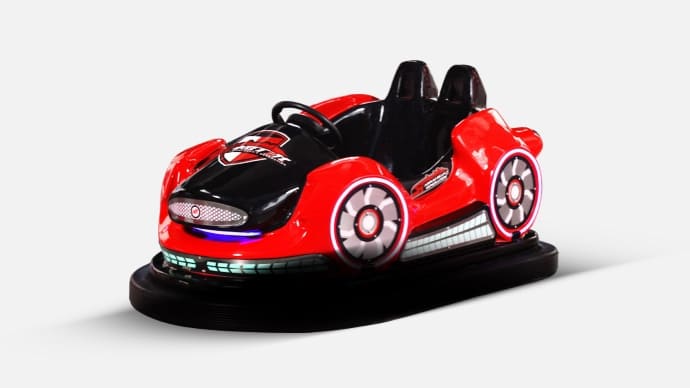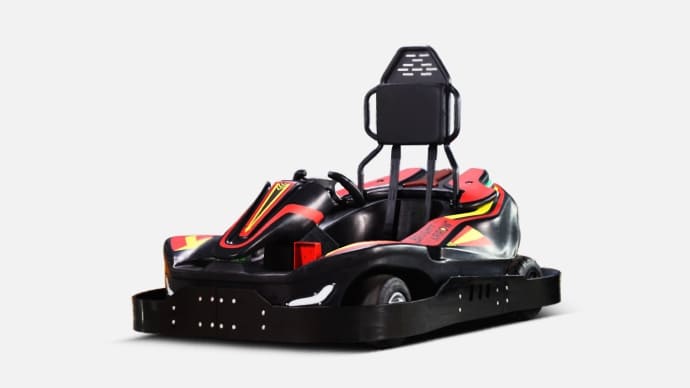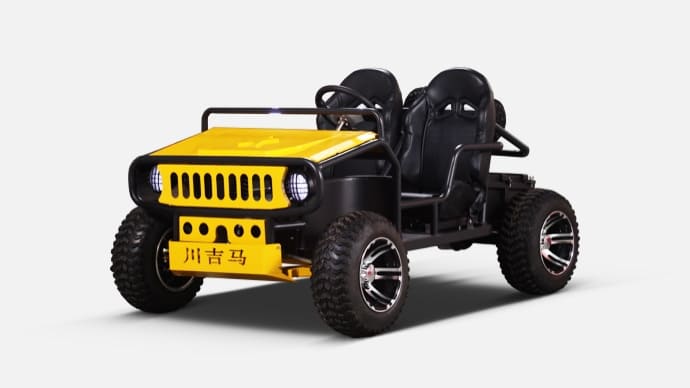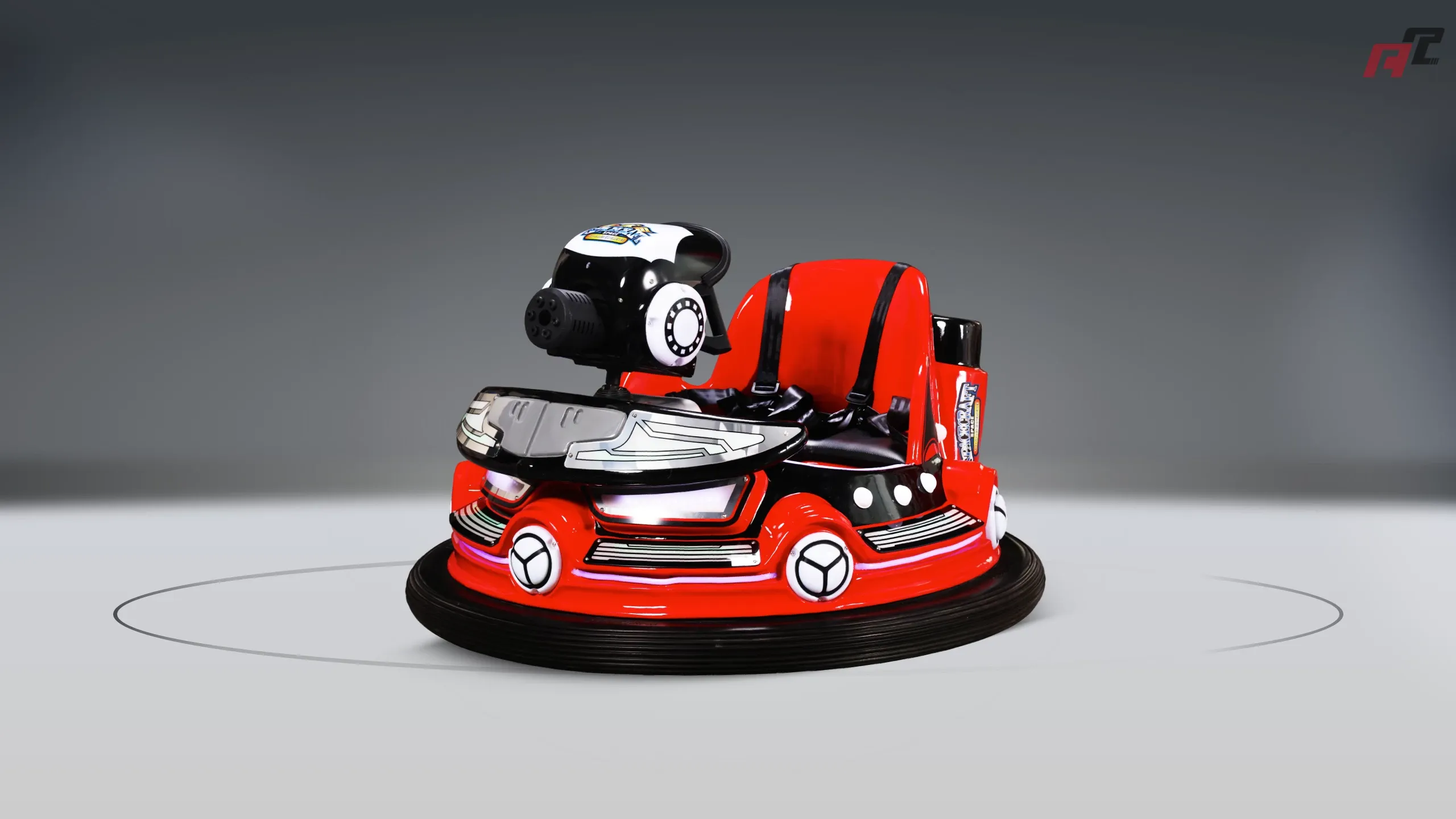Everything You Need to Know About Battery Bumper Cars
Learn all about ANCHI Battery Bumper Cars! This comprehensive guide answers your FAQs, covering everything from safety features to maintenance tips. Discover why ANCHI is the leading choice for thrilling and reliable bumper car experiences. #BatteryBumperCars #FAQs #ANCHI
Introduction
Bumper cars have been a cornerstone of fun and excitement at amusement parks and family entertainment centers for generations. While the classic electric floor grid models remain popular, a newer innovation has significantly expanded the possibilities: battery bumper cars. These self-powered vehicles have revolutionized the industry, offering greater flexibility and easier installation.
If you're considering adding bumper cars to your venue or simply curious about this modern twist on a beloved ride, understanding the ins and outs of battery bumper cars is essential. This comprehensive guide covers everything from how they work and their key advantages to operational considerations and choosing the right models for your needs.
Section 1: What Exactly Are Battery Bumper Cars?
At their core, battery bumper cars are amusement rides designed for the same thrilling, low-speed collisions as traditional models. The fundamental difference lies in their power source.
- Definition: Battery bumper cars are self-contained units powered by onboard rechargeable batteries.
- Key Difference from Traditional Bumper Cars: Unlike electric grid bumper cars that draw power from a conductive floor or ceiling grid via poles or brushes, battery cars carry their power source with them. This eliminates the need for complex and costly conductive track infrastructure.
- Modern Evolution: Their development has made bumper car attractions more accessible and adaptable to various locations.
Section 2: How Do Battery Bumper Cars Work?
The operation of battery bumper cars is relatively straightforward, relying on their internal components.
- Power Source: The heart of the system is a robust, rechargeable battery pack (often lead-acid or lithium-ion) stored within the car's chassis.
- Motor and Drive System: The battery supplies power to one or more electric motors connected to the wheels, propelling the car.
- Control System: Riders typically control the car's movement using joysticks or a steering wheel, which send signals to the motors and steering mechanism.
- Charging Process: When not in use, the cars are connected to charging stations to replenish their batteries, usually overnight or between operating sessions.
Section 3: Key Advantages of Choosing Battery Bumper Cars
The self-contained nature of battery bumper cars offers significant benefits over traditional grid systems.
- Flexibility and Mobility: They can be operated on virtually any smooth, flat surface, including concrete, wood, or even temporary inflatable arenas. This allows for easy relocation and use in diverse settings like shopping malls, event venues, or existing non-powered spaces.
- Easier and Faster Installation: There's no need to install an expensive and permanent electrified floor or ceiling grid. Setting up a battery bumper car area is much simpler, requiring just a suitable surface and charging points.
- Lower Infrastructure Cost: Avoiding the complex grid installation significantly reduces initial setup costs.
- Enhanced Safety: Eliminating the exposed electrified grid removes a potential safety hazard present in traditional systems.
- Versatility: Their ease of deployment makes them ideal for both permanent installations and temporary events, fairs, or parties.
Section 4: Types, Features, and Design Variations
Manufacturers like Anchi Amusement offer a wide variety of battery bumper cars, catering to different tastes and operational needs.
- Design and Aesthetics: Battery bumper cars come in numerous styles, from classic round shapes to fun animal designs (like those seen on Anchi's site), futuristic looks, and even inflatable options. This allows operators to choose designs that fit their venue's theme.
- Material and Durability: Bodies are typically made from durable materials like fiberglass or tough plastic to withstand impacts. Bumpers can be solid rubber or inflatable, designed to absorb shocks effectively.
- Battery Performance: Key considerations include the battery's capacity (how long it lasts per charge), the charging time, and the overall expected lifespan of the battery pack.
- Safety Features: Standard features include safety belts or restraint systems, durable and shock-absorbing bumpers, and robust construction.
- Optional Features: Many models include exciting additions like built-in music systems, vibrant LED lighting effects, remote control functionality for operators, and integrated coin or card payment systems.
Section 5: Operation and Safety Considerations
Operating battery bumper cars safely and efficiently is crucial for a successful attraction.
- Operator Training: Ensure staff are properly trained on operating the cars, managing the ride area, enforcing rules, and handling emergencies.
- Rider Rules and Supervision: Clearly post and strictly enforce safety rules for riders, including age/height restrictions, proper seating, and keeping hands and feet inside the car. Constant supervision of the ride area is vital.
- Track Area Management: Maintain a clear, smooth, and obstacle-free operating surface. Define the boundaries of the ride area clearly.
- Battery Management: Follow manufacturer guidelines for charging cycles. Monitor battery levels during operation and swap out cars for charging as needed to ensure consistent performance.
Section 6: Maintenance Basics for Battery Bumper Cars
While easier to install, battery bumper cars still require regular maintenance to ensure longevity and safety.
- Focus on Battery Care: Proper charging procedures and monitoring battery health are paramount for battery-powered units.
- Regular Cleaning and Inspection: Keep cars clean and perform daily visual checks for damage to the body, bumper, wheels, and restraints.
- Mechanical and Electrical Checks: Periodically inspect motors, wiring connections, steering components, and wheels for wear or damage. Refer to the manufacturer's manual for specific maintenance schedules and procedures.
Section 7: Battery Bumper Cars FAQ
Here are some frequently asked questions about battery bumper cars:
- How long do the batteries last on a single charge?
- Answer: This varies depending on the battery type, capacity, usage intensity, and car model, but typically ranges from 4 to 8 hours of continuous operation.
- How long does it take to recharge the batteries?
- Answer: Charging time also varies, often taking between 6 and 12 hours for a full charge, making overnight charging common.
- What kind of surface do they need?
- Answer: They require a smooth, flat surface like concrete, asphalt, wood, or a dedicated mat or inflatable track.
- Are battery bumper cars safe?
- Answer: Yes, when operated correctly with proper supervision, rider rules, and regular maintenance, they are designed with safety features like seatbelts and energy-absorbing bumpers. The absence of an exposed electrical grid also enhances safety.
- Can they be used outdoors?
- Answer: Many models are suitable for outdoor use, but check the manufacturer's specifications regarding weather resistance and storage requirements.
- What is the typical lifespan of the battery?
- Answer: With proper care, lead-acid batteries can last 1-3 years, while lithium-ion batteries typically last longer, often 3-5 years or more.
Section 8: Choosing the Right Battery Bumper Cars for Your Venue
Selecting the best battery bumper cars involves careful consideration.
- Assess Your Needs: Determine your budget, available space, target age group, and desired capacity.
- Research Manufacturers and Suppliers: Look for reputable companies with a proven track record in amusement ride manufacturing, such as Anchi Amusement, who offer various battery-powered models.
- Consider Quality and Certifications: Prioritize durable construction, quality components, and adherence to international safety standards (like CE and ASTM).
- Evaluate Battery Specifications: Understand the battery type, capacity, charge time, and warranty offered.
- Check After-Sales Support and Warranty: Ensure the manufacturer provides good technical support, spare parts availability, and a reasonable warranty period.
Conclusion
Battery bumper cars offer a fantastic, flexible, and often more accessible way to bring the excitement of bumper car rides to a wider range of venues. Their ease of installation, lower infrastructure costs, and inherent safety advantages make them an attractive option for amusement parks, FECs, event organizers, and more.
By understanding how they work, their benefits, and the key considerations for operation and maintenance, you can make an informed decision and successfully integrate these popular attractions. Remember to choose a reputable supplier like Anchi Amusement and prioritize quality and safety to ensure years of thrilling, profitable fun for your customers.













